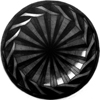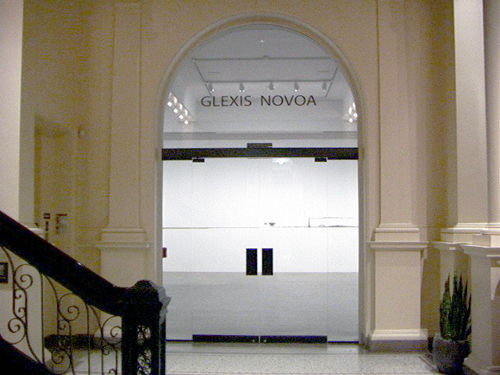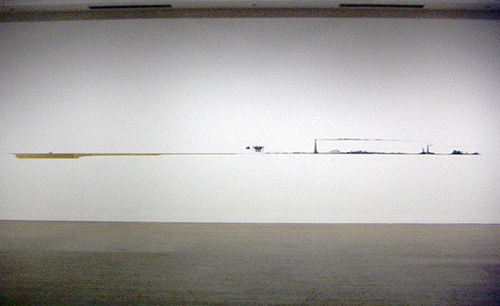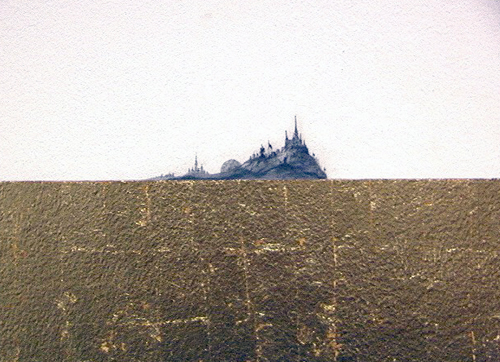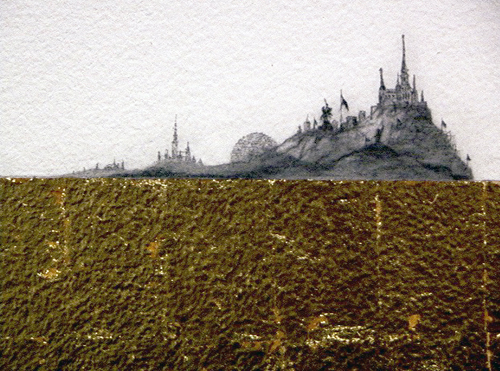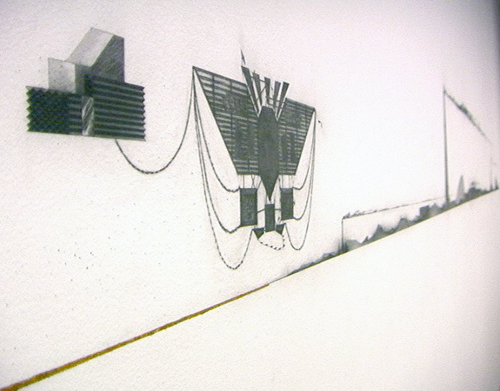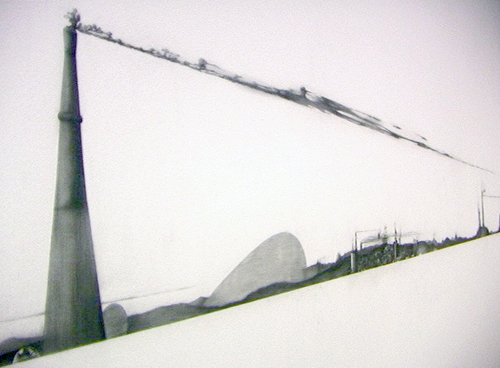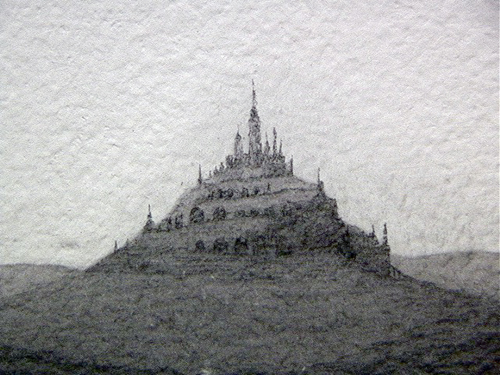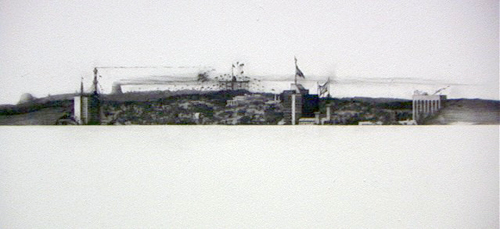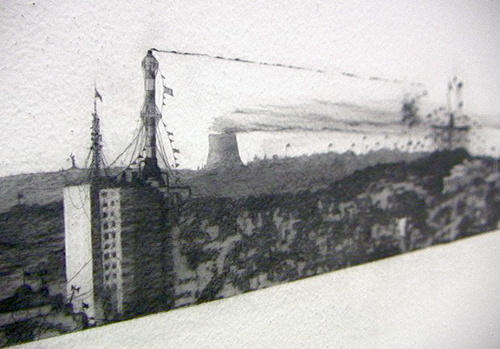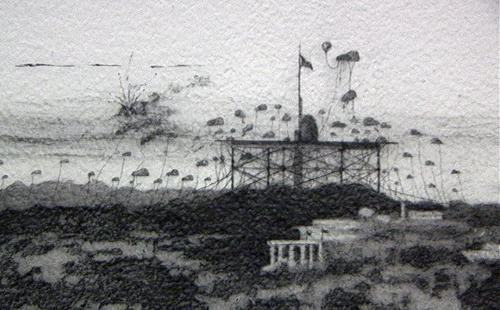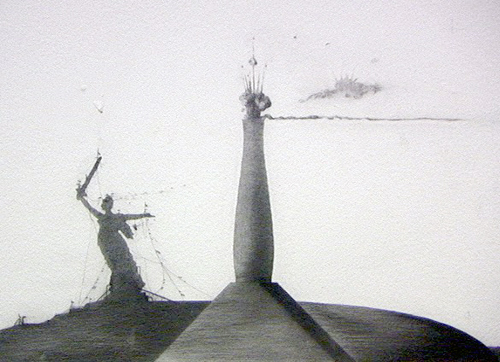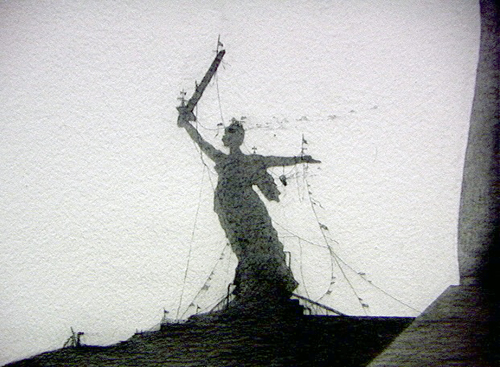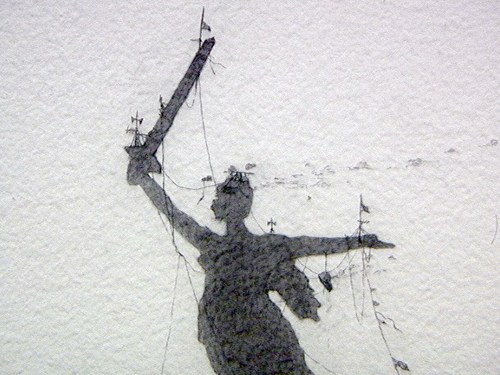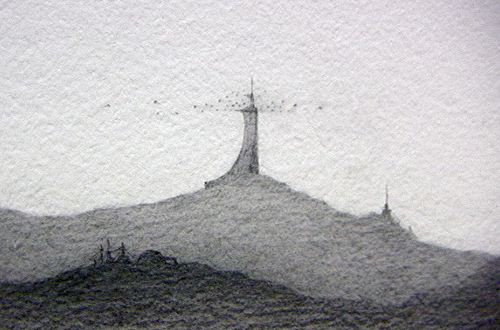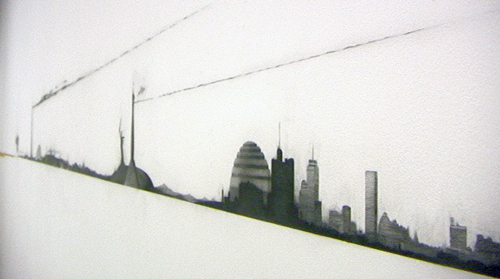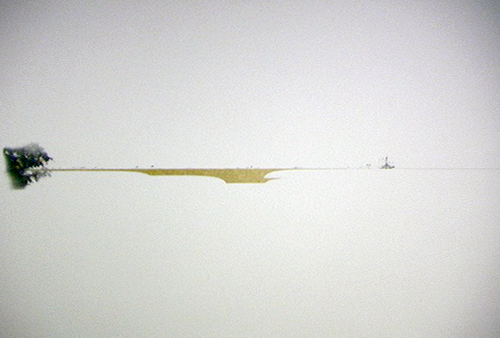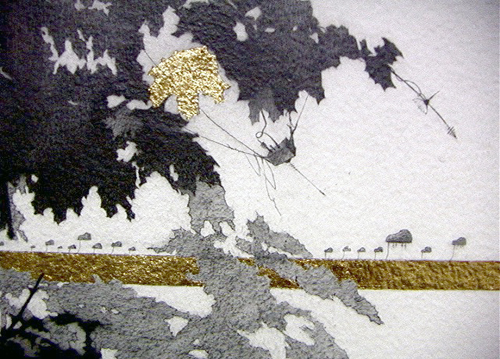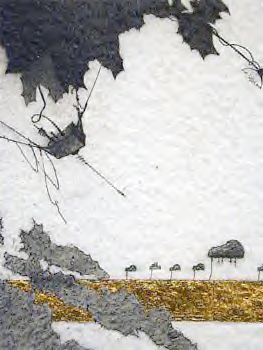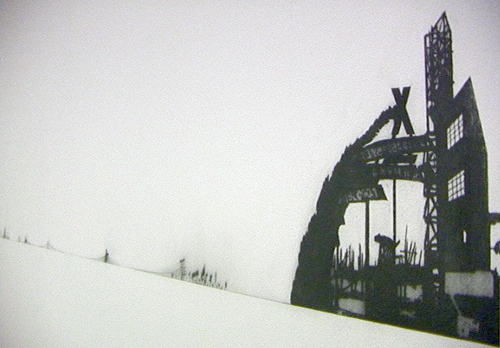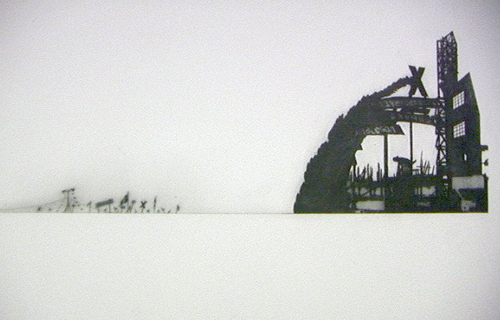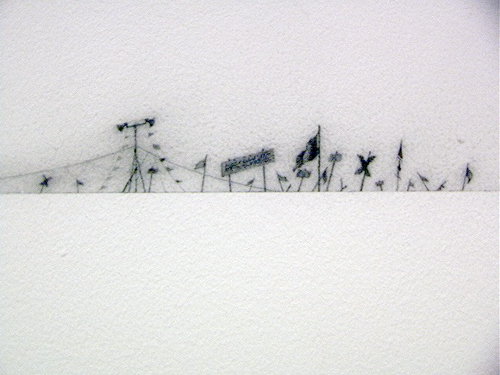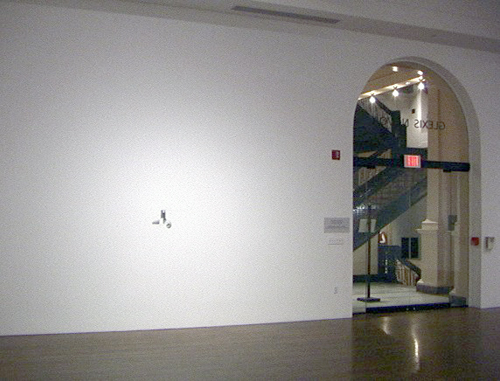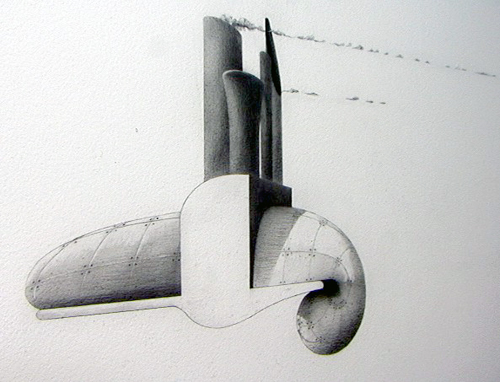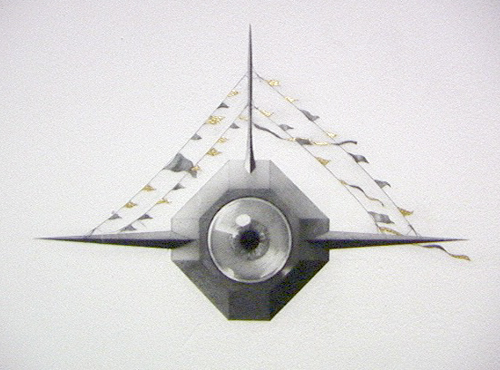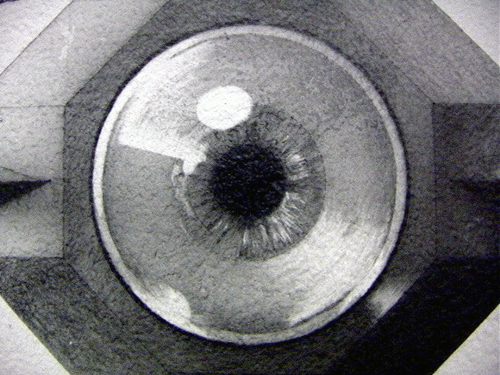Worcester | Gold and Smoke 2003 site-specific graphite drawing and gold leaf on the wall, curated by Susan Stoops; Worcester Art Museum, Worcester, Massachusetts. Supported by the Don and Mary Melville Contemporary Art Fund, David & Marlene Persky & Worcester Magazine
“For the site-specific “Worcester drawing,” Novoa’s visit here last spring played a critical part in shaping the image. Novoa explored Worcester’s architecture and experienced the panoramic hillside views from Bancroft Tower. He learned about the city’s history of manufacturing and the impact of the Blackstone Canal connecting the city and its products to the seaport of Providence. He also studied the museum’s 19th-century New England landscape paintings whose revered forest and countryside subjects were vulnerable to threats of urbanization and industrialization. Collectively, these keys to understanding the environs of Worcester today and the power and aspirations of previous generations inspired his composition and choice of graphite and gold leaf for the landscape that spans the walls of the museum’s Contemporary Gallery (at a length of 166 feet).
The drawing’s point of view is ours as we enter the gallery; our experience as we move across the room toward the walls is that of approaching a distant horizon. Echoing the room’s symmetry, the eye-level drawing was composed as two major passages—to the right a graphite expanse, to the left a scene dominated by gold leaf—that meet at the center of the main wall. Here, a cryptic heraldic sign of personal importance to the artist (based on Novoa’s politically subversive La Etapa Practica from 1990) has been recruited back into service. Tethered to a flying building, it hovers above miniature scenes that appear on the vast horizon below.
Prominent in the graphite panorama are factory smokestacks, like those of Worcester’s past, spewing a graphite “smoke” that settles over contemporary downtown landmarks. In parallel bands, the smoke trails across the gallery wall, changing in scale and density along the way. The horizon below is punctuated by rolling hills, various Communist structures (like the “Mamayev” monument to the Motherland erected in Stalingrad) and propaganda apparatus (flags and loudspeakers), rooftop encampments, high-rise buildings encased in cables and festooned with flags, and explosions of varying magnitude.
On the left-hand side of the room, mysterious graphite events (including surveillance devices hidden amidst leafy branches, a parade of parachutes, a flag-decorated tent, and an isolated mountaintop cathedral) occur simultaneously yet more sporadically along a river of gold leaf. Its rich yet fragile materiality is a poignant reminder of Worcester’s once-steady outgoing stream of factory goods and incoming flow of material wealth. Gold. Smoke. In Novoa’s apocalyptic landscape they are equally ephemeral.
Epic in scale and narrative breadth, Novoa’s drawing indicates time and place as a complex network of observations and memories, impressions and inventions, histories and fantasies. Yet it is in the drawing’s ephemeral reality that its most profound point of connection to us may reside, for we share its grasp of “real” time and together occupy the “real” space of the gallery. Novoa brings to the traditional territory of drawing some of the conditional necessities and risks of performance art—something he knows well. After working nearly uninterrupted for two weeks making the drawing and finishing it at 1 p.m. on the day of the opening, Novoa had only one encounter later that night with the completed drawing, knowing he would never see it again.”
-Susan L. Stoops Curator of Contemporary Art; Worcester Museum, Massachusetts 2003
